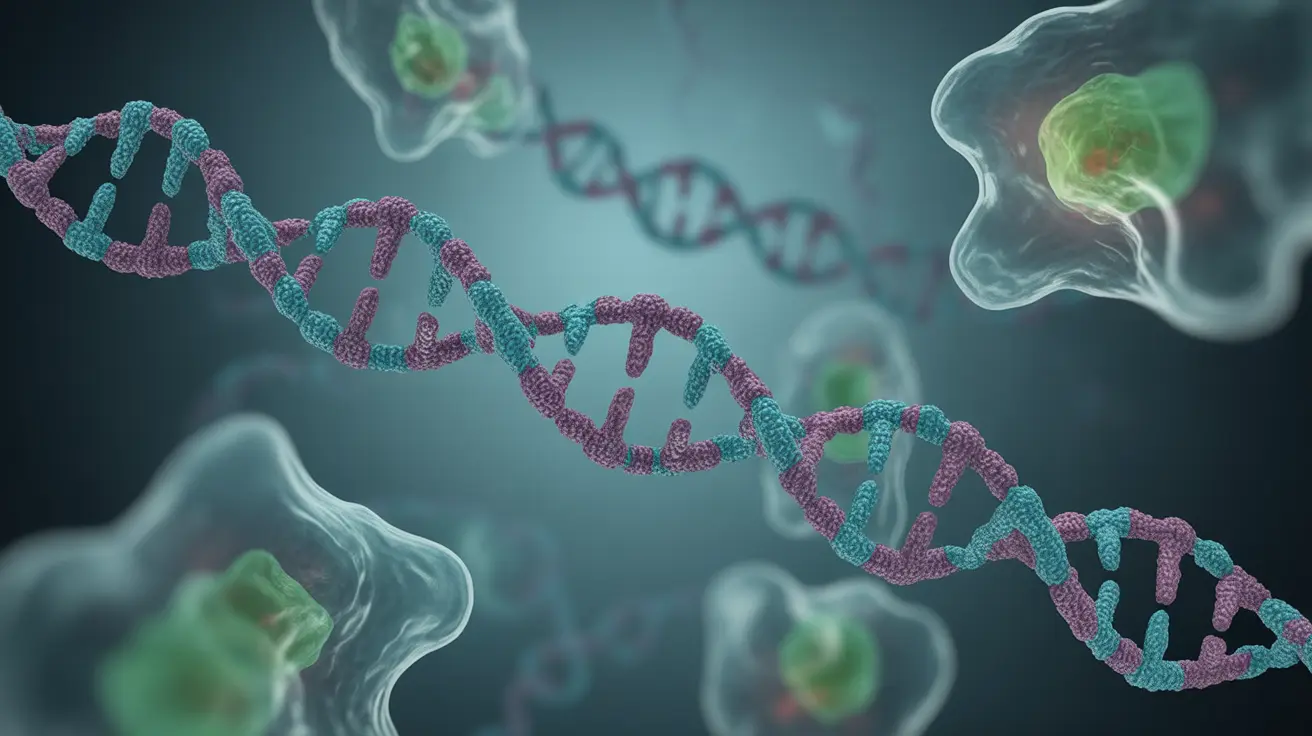Leukemia, a complex blood cancer affecting thousands of people worldwide, has both genetic and environmental components that contribute to its development. Understanding the genetic aspects of leukemia is crucial for patients, families, and healthcare providers in managing risk factors and making informed medical decisions.
While not all cases of leukemia are inherited, genetic factors play a significant role in its development. Let's explore the relationship between genetics and leukemia, including hereditary risks, genetic mutations, and the importance of genetic testing for at-risk individuals.
The Role of Genetics in Leukemia Development
Leukemia occurs when DNA mutations affect blood cell production in the bone marrow. These genetic changes can be acquired during a person's lifetime or, in some cases, inherited from parents. Understanding these genetic mechanisms is essential for proper diagnosis and treatment planning.
Acquired vs. Inherited Genetic Changes
Most leukemia cases develop from mutations that occur during a person's lifetime (acquired mutations). These changes can result from environmental factors, aging, or random cellular events. However, some people inherit genetic variations that increase their susceptibility to developing leukemia.
Common Genetic Risk Factors
Several genetic conditions and inherited syndromes can increase the risk of developing leukemia:
- Down syndrome
- Li-Fraumeni syndrome
- Fanconi anemia
- Bloom syndrome
- Ataxia-telangiectasia
These conditions affect DNA repair mechanisms or chromosome stability, potentially leading to the development of leukemia.
Environmental Factors and Gene Interaction
The relationship between genetic predisposition and environmental factors is complex. Even with genetic risk factors, external elements can influence whether leukemia develops:
- Exposure to radiation
- Certain chemicals and benzene
- Previous chemotherapy treatment
- Smoking
- Viral infections
The Importance of Genetic Testing
Genetic testing can be valuable for individuals with a family history of leukemia or related conditions. This testing helps identify inherited mutations and assess risk levels, enabling proactive health management and informed decision-making about preventive measures.
When to Consider Genetic Testing
Consider genetic testing if you have:
- Multiple family members with leukemia
- Family members diagnosed at young ages
- Known genetic syndromes in your family
- Personal history of early-onset cancer
Frequently Asked Questions
Is leukemia a genetic disease, and how do genetic mutations cause it?
Leukemia is partly genetic, caused by mutations in genes that control blood cell growth and division. These mutations can be acquired throughout life or inherited. The genetic changes disrupt normal blood cell production, leading to the development of cancerous cells in the bone marrow.
Can leukemia be inherited from my parents, and which types are hereditary?
While most leukemia cases are not directly inherited, certain genetic mutations that increase leukemia risk can be passed down from parents. Chronic lymphocytic leukemia (CLL) and acute lymphoblastic leukemia (ALL) show stronger hereditary patterns than other types.
What genetic factors increase the risk of developing leukemia?
Several inherited genetic conditions increase leukemia risk, including Down syndrome, Li-Fraumeni syndrome, and Fanconi anemia. Mutations in specific genes like TP53 and BRCA1/2 can also contribute to increased risk.
Should I consider genetic testing or counseling if leukemia runs in my family?
Yes, genetic testing and counseling are recommended if you have a strong family history of leukemia. These services can help assess your risk, guide preventive measures, and inform medical decisions for you and your family members.
How do environmental and lifestyle factors influence the genetic risk of leukemia?
Environmental factors like radiation exposure, chemical exposure, and smoking can interact with genetic predispositions to increase leukemia risk. Maintaining a healthy lifestyle and avoiding known risk factors is especially important for individuals with genetic susceptibility.




